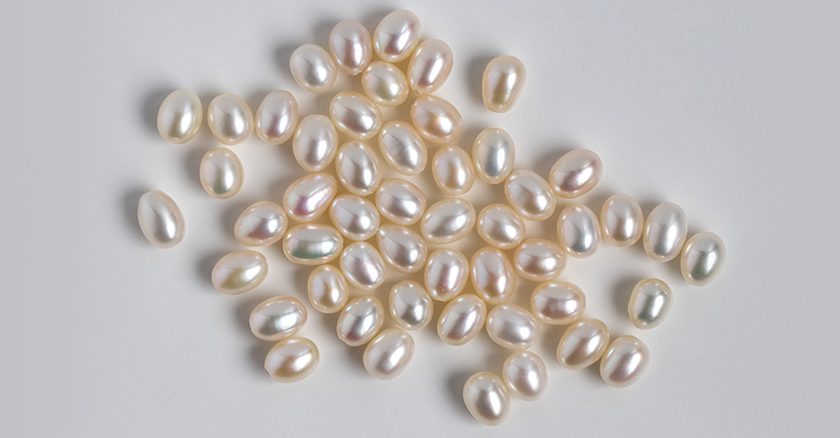Pearls need no introduction, right? They are undoubtedly one of the rarest and most precious creations of nature. Wearing a piece of pearl jewelry instantly adds sophistication and glamour to any look. This makes pearls one of the most sought-after gems in the world.
Moreover, there are different types of pearls available in the market, but freshwater pearls are the most popular. Want to know what makes them so special? Here are some lesser-known facts about freshwater pearls you probably didn’t know.

1. Freshwater Pearls Come in a Variety of Shapes
When you think of pearls, a round, symmetrical shaped gem comes to mind. But you’ll be surprised to know that freshwater pearls are not as round as saltwater pearls and they come in a variety of shapes. This sets them apart from the rest. Some common freshwater pearl shapes include round, nearly-round, baroque, button, coin-shaped and drop. However, the most desired of all is round. They are also more durable than other pearl types and a lot more affordable too.
2. They Take Six Months to Form
Did you know the formation time differs from one pearl type to the other? When it comes to freshwater pearls, the average time is six months. However, at times the pearl can take up to two years to grow. The process begins when the freshwater mussel is inserted with 24-30 pieces of mantle tissue at the freshwater pearl farm. After this, the sac begins to develop and the cells start secreting nacre, leading to the formation of a calcium-carbonated compound – pearl.
3. They Come in a Rainbow of Natural Pastel Colors
Another interesting fact about freshwater pearls is that they not only come in different shapes but also colors. Apart from the traditional white, you can also buy jewelry adorned with freshwater pearls in cream, lavender, pink and other pastel hues. This is one of the reasons why they are so popular and in demand. Having said that, freshwater pearls lack the deep, beautiful gleam that other varieties feature. But that doesn’t stop jewelry designers and pearl enthusiasts from buying this timeless and beautifully colored gem.
4. China is the Largest Producer of Freshwater Pearls
Freshwater pearl cultivation began in Japan’s Lake Biwa. However, due to lack of necessary resources the pearls were not of good quality and couldn’t meet the demand. The size of these pearls was around 35mm and they were baroque in shape. In 1962, China began freshwater pearl cultivation using the same Japanese technique. These pearls too were oddly shaped and of low quality but the mass production fulfilled the increasing demand. Today, China is the largest producer of freshwater pearls and the quality has also improved over the years. The variety of colors and shapes indicate the quality to become even better in the future.
5. The Most Expensive Pearl is Valued at $100 Million
Did you know the most expensive pearl was found in 2016? It was kept under the owner’s bed for almost a decade before it was discovered when the house got destroyed by a fire. It belonged to a fisherman who found it near the Philippines coast and kept it as a good luck charm. Wondering why it’s so expensive? It weighs over 75 pounds and is about 26 inches long! It is the largest pearl ever discovered and is worth whopping $100 million.
Did You Know?
The oldest pearl in the world is about 7,500 years old. It was discovered in the United Arab Emirates in 2012. Prior to that, the oldest pearl in the world was 2,500 years old.
Also Read: 5 Intriguing Facts About Diamonds
Top 5 Facts on Freshwater Pearls FAQs
- Are freshwater pearls good?Yes, freshwater pearls are more durable than other varieties and quite affordable too. If you opt for round-shaped freshwater pearls, they will appear very similar to Akoya pearls.
- Why is freshwater pearl cheaper?Firstly, freshwater pearls are abundantly available. Secondly, freshwater mussels are larger in size which means they can produce more pearls at one time. These factors make them more affordable.
- Are freshwater pearls real?Yes, freshwater pearls are real, cultured pearls. They are cultivated in lakes, ponds and rivers. Most freshwater pearls are white but they also come in pastel hues like pink, lavender and cream.




























